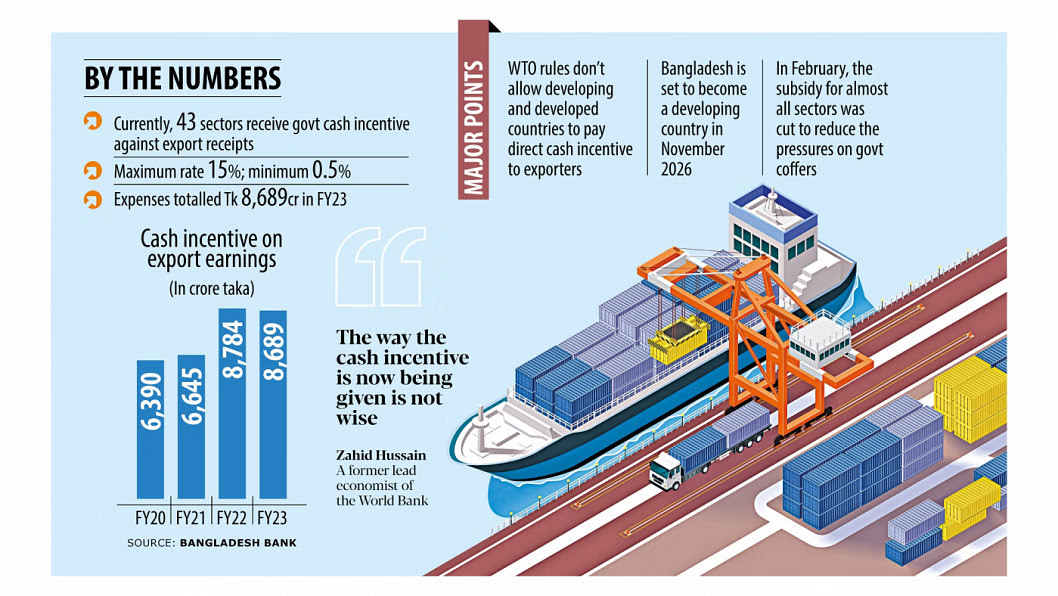The RMG sector was turning around quite well in the post-Covid-19 period; and then the Russia-Ukraine war in late February of last year interrupted that momentum
The apparel sector, the largest contributor to the national export earnings, started the year 2022 with a 30.36% annual growth.
The RMG sector was turning around quite well in the post-Covid-9 period; and then the Russia-Ukraine war in late February of last year interrupted that momentum.
Exporters said that the impact of the war may continue in 2023 and the year will be a crucial and challenging one for the apparel sector of the country.
However, the sector bagged $45.7 billion by shipping apparel items in the just concluded 2022, seeing an annual growth of 27.64% from $35.41 billion in 2021.
Industry insiders said that the major challenges include the prolonged Russia-Ukraine war, mounting energy prices and fear of recession.
Moreover, 2023 is the year of the national poll of Bangladesh. Rallies of the political party may create instabilities and put pressure on exports.
Speaking to Dhaka Tribune, Faruque Hassan, president of the Bangladesh Garment Manufacturers and Exporters Association (BGMEA) said that they will face challenges in 2023 as the unit price starts to come down. Due to that, the price of the products will also start to come down.
“Moreover, the demand will remain low in 2023 due to inflation, war and economic turmoil, which will impact the sector adversely,” he added.
Due to a hike in energy prices, food prices and inflation, the budget for clothing shrunk, which will also be a challenge.
“To face these challenges, we should focus on inter-apparel diversification and increase efficiency, productivity and innovation,” he added.
He also said that they hope the political parties won’t demonstrate rallies that could harm the business and the economy of the country.
However, he also demanded policy support from the government that can reduce these challenges.
BGMEA Director Mohiuddin Rubel said that soon after the recovery from the shock of Covid-19, the impact of the Russia-Ukraine war began and threw the global economy into turmoil.
“Our main challenge is figuring out a way to overcome these barriers. However, these crises were for the entire world and we have done much better,” he added, saying that they are now focusing on increasing their share in new markets and growth in new markets is good so far.
He also urged all political parties to maintain a peaceful position for the sake of the country.
Ekram Hossain, director of AZ Group said that 2023 is a crucial and challenging year.
“I am expecting a moderate export recovery in the year 2023 as sales in the western world are gradually increasing with a new normal emerging from the Russia-Ukraine war and declining petroleum product prices,” he added.
Mahbub Kamal Himel, director of Mithela Group said that it is anticipated that 2023 will be a challenging year for the world economy, particularly for Bangladesh.
“The question is how to counteract the upcoming headwinds. It is quite difficult to stick to a proper plan and strategy at this moment rather than waiting for a suitable solution. I hope that the country will get the needed solution to the power shortage in 2023,” he added.
Ehsan Haq, director of Knittex Industry said that they are quite worried about 2023 as the global impact will cause a slowdown once again and impact end-of-year performance.
“The challenges are obviously with price and order demands coming out of the west,” he added.
Shah Rayeed Chowdhury of Evince Group said that the immediate challenges that they can foresee right away are delivery delays in fabric shipment due to an increase in the Covid-19 infection rates across China, slow sales of Christmas and Black Friday, which resulted in the stock of products across the customers end and so on.
“2023 will undoubtedly be the year where we need to gear up to face obstacles head-on,” he added, noting that they will focus on the steps to diversify product lines to ensure that lines are running.
Professor Mustafizur Rahman, a distinguished fellow of the Center for the Policy Dialogue (CPD) told Dhaka Tribune that Bangladesh should take initiatives to increase local value addition in this sector as it is the most important one for reserve growth. The country should also diversify product baskets and explore new markets.
Along with a growth of 27.64%, one of the major achievements of the sector in 2022 was setting up “Apparel Diplomacy.”
Moreover, the country touched the milestone of the highest number of USGBC-certified Leed Green factories with 183 factories. Of which, 60 are platinum.
One of the biggest successes in 2022 was “Made in Bangladesh Week.”
Moreover, Bangladesh bagged the second position again in the global apparel export market in 2021 by surpassing Vietnam with a market share of 6.40%, according to World Trade Statistical Review 2022, released by the World Trade Organization (WTO).
















